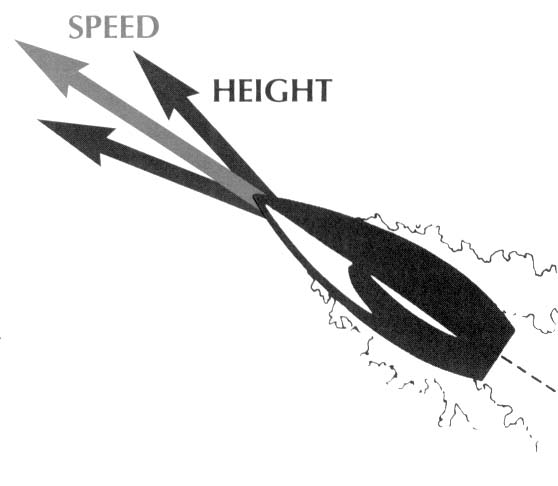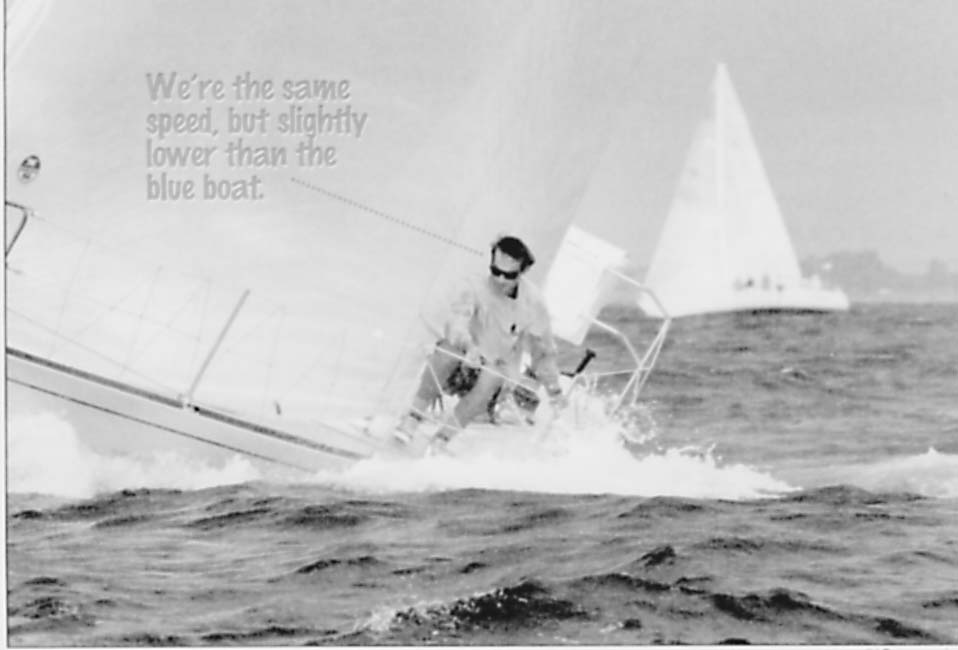How to Report Your Speed
by David Dellenbaugh
In sailboat racing, it’s essential to have a good feel for how your boat is moving relative to the competition. This gives the helmsperson and sail trimmers the information they need to get (and keep) your boat going as fast as possible.
The best way to do this is for one crewmember to take on the job of watching nearby competitors and calling out speed. On a bigger boat, this “speed reporter” should be someone who has no other major responsibilities (such as sail trimming). The speed reporter should sit relatively far aft on the rail so he or she can a) be heard, and b) see behind the genoa. On a small boat, the reporter may be any crewmember.
When you want to describe the performance of any boat that’s sailing upwind or downwind, you have to talk about both Speed and Height. Speed means how fast the boat is moving forward through the water. Height refers to how high it is pointing.
A good speed reporter will never talk about just one of these variables without the other. It means nothing, for example, to say simply, “We’re faster.” Instead say, “We’re faster and the same height.” This gives your fellow crewmembers enough information to evaluate your performance. |
 |
The speed reporter’s primary job is to give frequent reports on your relative performance in two areas: 1) Speed through the water, and 2) Height, or pointing (see diagram). To do this, you must carefully observe nearby boats for a while: one clue is how those boats appear to move relative to the land behind them. Try to describe both variables as precisely as possible (see sample reporting below), focusing on changes in relative speed and height when they occur.
Speak loudly enough so you can be heard by the sail trimmer(s), tactician and helmsperson, since all these people need the information you are giving. And when you have a choice of two or more areas to observe, focus on the blind spots hwere others can’t see (a typical blind spot for the skipper is behind his or her back, on your weather quarter).
The times when your reports are particularly important include right after the start when you’re fighting for position off the line, on the first beat (or run) when you’re trying to find the groove, and anytime you’re neck and neck with another boat. During these times, your speed reports may be nearly non-stop, like an announcer at a horse race.
 |
The speed reporter is as important as any crewmember for helping get your boat up to speed. Here’s how a sample running report might sound:
“We’re a little higher, same speed.”
“Still a bit higher, maybe faster.”
“Same height now, same speed.”
“Slightly lower, but speed is at least the same.”
“A little lower, and now a bit faster.”
“Still lower and faster, net gain to us.”
“Almost the same height, a lot faster.”
“Same height, still faster.”
“Higher and faster.”
“A lot higher, now the same speed.”
“Still higher but a little slower.”
“Higher and slower, net gain to him.”
“Same height, same speed.” |
To avoid confusion when you’re reporting speed, always talk about your own boat. That way, when you say “higher and faster,” everyone will know this refers to your boat, not any other.
In general, the speed reporter should simply report his or her observations and not try to interpret them. However, there’s at least one exception: When you say something like, “We’re higher and slower” or Lower and faster,” it’s not clear whether you are actually gaining or losing on the other boat. That’s when you need to introduce the concept of “net gain.” For example, you might say, “We’re higher and slower, net gain to us,” meaing your VMG is better. Or, “We’re lower and faster, net gain to him,” in which case your sail trimmer(s) will probably sheet a little harder, and the helmsperson will head up slightly.
Dave is a two-time America’s Cup veteran who publishes the newsletter Speed & Smarts. For a subscription call: 800-356-2200.

